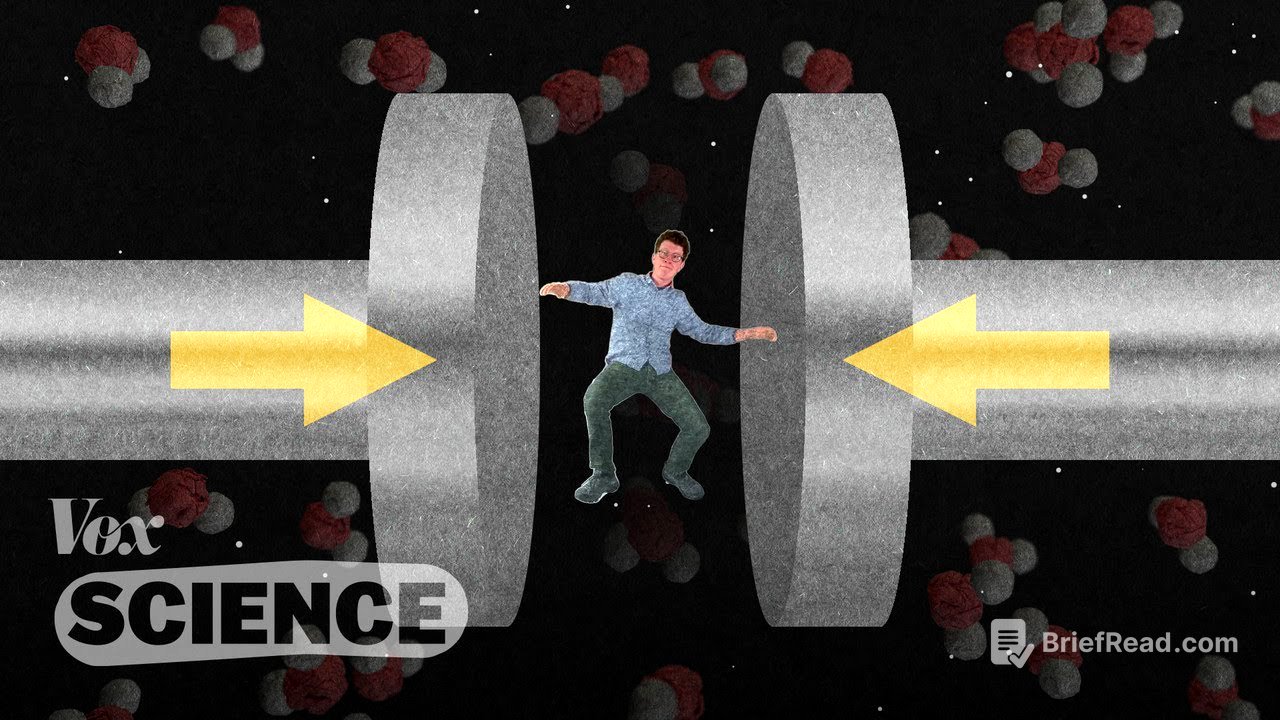TLDR;
The video explores the effects of extreme pressure on matter, from the depths of the ocean to the core of the Sun. It discusses how pressure alters the properties of substances like hydrogen, sodium, and water, leading to bizarre states of matter such as Ice-XVIII and metallic hydrogen. The video also highlights the work being done at the Center for Matter at Atomic Pressures (CMAP) using powerful lasers to recreate these extreme conditions and study their effects, with implications for understanding planetary evolution, the search for clean energy through nuclear fusion, and the fundamental laws of physics.
- Extreme pressure can drastically alter the properties of matter, leading to new states and behaviours.
- Facilities like CMAP use powerful lasers to recreate extreme pressures found in planetary cores and stars.
- Understanding matter under extreme pressure has implications for energy production and planetary science.
Introduction to Extreme Pressure [0:00]
The video begins by demonstrating the incompressibility of water under normal conditions, even with significant force. It then poses the question of what would happen to water and other substances under the extreme pressures found in the Earth's core or inside the Sun. The presenter explains that the answer is quite strange and that physicists are only beginning to understand the rules governing matter under such conditions, describing it as a new regime of matter.
Understanding Atmospheric Pressure [1:06]
The journey begins at the Earth's surface, where atmospheric pressure is introduced. The presenter compares the pressure exerted by a phone on a palm to the pressure of the atmosphere, which is 500 times stronger. This pressure is likened to Dwayne "The Rock" Johnson balancing on the phone. The presenter explains that the air pressure is balanced by internal pressures within the body, making it unnoticeable. Before descending, the presenter takes samples of hydrogen, sodium, and water to observe how they change under pressure.
Journey to the Bottom of the Mariana Trench [2:16]
As the journey descends into the ocean, the pressure increases significantly. At ten metres, the pressure equals another atmosphere. The video notes the depths of scuba dives and the crushing of the Titan submersible. At the bottom of the Mariana Trench (1,000 atmospheres), the hydrogen gas has shrunk considerably, while the solid sodium and liquid water remain relatively unchanged due to the tight packing of their molecules and electrostatic repulsion.
Deeper into the Earth's Mantle [3:46]
Continuing deeper into the Earth, the pressure increases more rapidly within the rock. At 10,000 atmospheres in the mantle, the temperature rises, causing some rock to melt and diamonds to form. As the pressure reaches 100,000 atmospheres, the sodium melts, the hydrogen becomes a liquid, and the water transforms into a solid cubic lattice known as Ice-VII, which has been found trapped inside diamonds.
Reaching One Million Atmospheres [4:39]
Approaching the Earth's core, the pressure reaches one million atmospheres, a point where external forces begin to overwhelm internal forces. The presenter introduces the Center for Matter at Atomic Pressures (CMAP) at the University of Rochester, which uses the Omega EP laser to study matter under these extreme conditions. Scientists queue for months to use the laser to blast tiny samples of matter and momentarily create pressures similar to those deep within the Earth.
The Omega EP Laser [6:24]
The video details how the Omega EP laser works. The laser beam is generated in the basement and directed through a series of lenses and devices to shape and monitor it. It is then amplified and directed towards a target chamber. The target is a tiny sample of matter sandwiched between layers. The laser light vaporises the first layer, creating a plasma that generates a shockwave, which compresses the sample. Sensors and cameras measure the changes in the sample.
Creating Ice-XVIII [7:56]
In 2017, researchers used the Omega EP laser to compress Ice-VII between two diamonds, creating pressures above 2 million atmospheres. This resulted in the formation of Ice-XVIII, a form of ice four times denser than normal ice and able to conduct electricity almost like a metal. This experiment briefly recreated conditions found inside the Earth.
Transformations of Sodium and Hydrogen [8:28]
As the journey continues, the video discusses how sodium becomes transparent under extreme pressure. The pressure squeezes electrons away from their atoms, trapping them in localised pockets, which prevents them from interacting with light. The video then speculates that deep within Jupiter, hydrogen may transform into a shiny, electrically conductive metal.
Pressures Inside Stars and Nuclear Fusion [9:49]
The journey extends into the Sun, where pressures exceed 100 billion atmospheres. At these pressures, the forces holding atoms together are overcome, and hydrogen nuclei fuse to form helium, releasing energy through nuclear fusion. Researchers are using lasers like Omega to study the possibility of recreating this process on Earth as a source of clean energy.
The Frontier of High-Pressure Physics [10:41]
The video concludes by emphasising that the study of matter under extreme pressure is a relatively new frontier in physics. Scientists are still exploring how different elements and substances behave and interact under these conditions, and how this knowledge can inform our understanding of planetary evolution and the potential for life in the universe.









